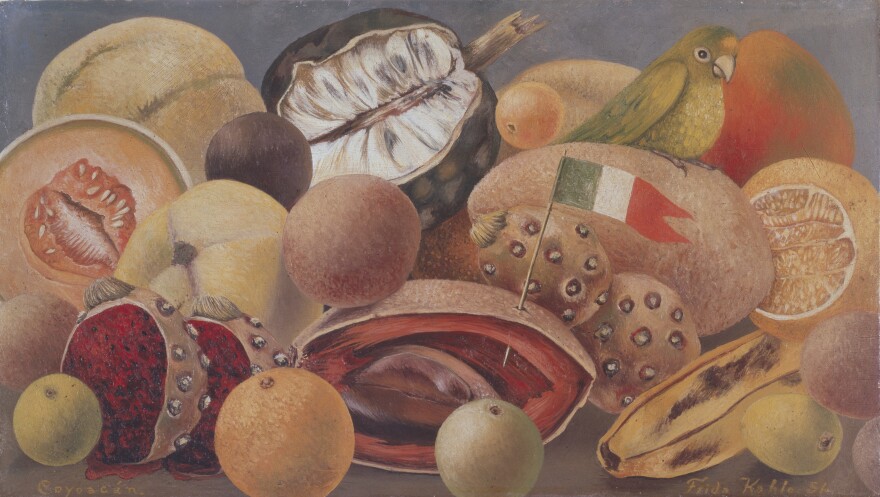What more is there to say about Frida Kahlo?
She died in 1954 at age 47. By now she's a cottage industry. Her face (that unibrow, the red lips, the scores of self portraits) reproduced on mugs, matchbooks, pandemic masks, of course tote bags.
Fans can recite her story: The terrible accident when she was 18 — a bus/tram collision in Mexico City smashing her body, and creating a lifetime of surgeries and pain.

The passionate, tumultuous years with artist Diego Rivera. "I suffered two serious accidents in my life," Kahlo said. "One in which a bus threw me to the ground ... the other ... Diego."
The extraordinary paintings she made until her death.
The global cult figure she's become.
There's some less familiar information in a new and very good documentary about her.
And on March 7, the Dallas Museum of Art opened a small exhibition —Frida Kahlo: Five Works— that finds revelations in lesser known paintings she made later in life when her health was deteriorating and her art changed.
"Still lifes were something she touched on throughout her career," Dallas curator Mark A. Castro says. "But in those last few years she returned to them in greater number."

Her themes remain: luscious fruits, love of Mexico, animals, Diego. But there are fewer radiant or tormented self-portraits. She told friends still lifes sold well, and were easier to do. (I wonder if she also grew weary of looking at her own aging, agonized face.)
Curator Castro says these later works are a kindof self-portrait, and Dallas conservation lab X-rays and infrared photography discovered for the first time how she worked. Still Life with Parrot and Flag showed her changing the position of the bird's wing, and cutting open fruit she'd initially painted intact. "There was a process of refinement that she was going through," Castro says. She moved from personal expression to "focusing on how to make them work on a visual level." Helpful information, as scholars go beyond Kahlo's life and hard times, to study her as a painter and intellectual.

But she was also, twice, the wife of Diego Rivera. And this small work, on a souvenir frame studded with painted shells, shows what he meant to her.
It looks like a devotional piece and, literally, it is. See the two dates on the frame? 1929 — the year they first married (then divorced, then re-married) and 1944 — marking the years of their on-and-off relationship. Maybe it was a birthday gift for Diego, or an anniversary present. She fuses their faces together. They become a whole.
The five works on view in Dallas belong to collectors in Mexico who offered them on loan. Mark Castro felt this was the perfect time to exhibit them. "In this difficult period, people feel a strong connection to Kahlo's sorrows and triumphs." Art helps us get through bad times, as makingart did for Kahlo.
"Painting completed my life" she said.
Her fans might feel the same way.
Art Where You're At is an informal series showcasing offerings at museums closed due to COVID-19, or at museums you may not be able to visit.
Copyright 2021 NPR. To see more, visit https://www.npr.org.



